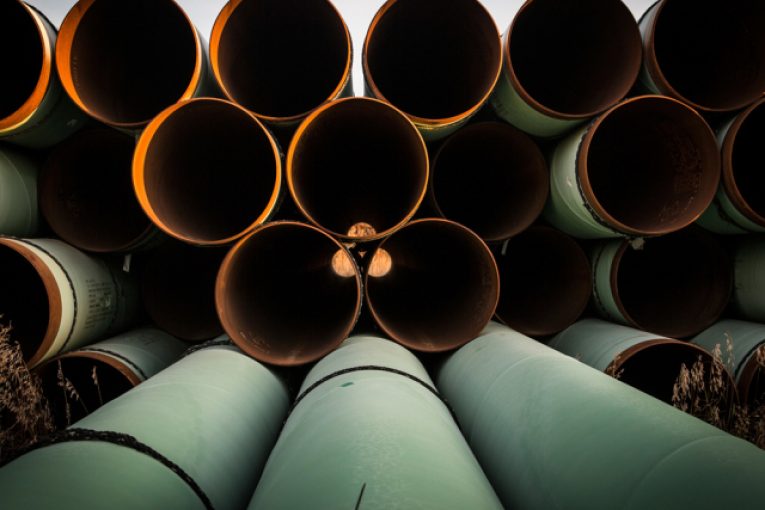
CALGARY – Enbridge Inc., North America’s largest pipeline company, is shifting its asset mix to reflect the energy transition underway across the world.
Al Monaco, chief executive officer of the Calgary-based company, said his company is taking a “gradual” approach to energy transition. While it will continue to invest in oil pipelines, the company will also invest increasingly larger proportions of its capital to natural gas and renewable energy projects as consumers around the world demand lower-emitting forms of energy.
We think having a diversified approach, having a gradual approach to the transition through natural gas and renewables makes a lot of sense
Enbridge CEO Al Monaco
“If you look at the energy supply/demand balance globally, we as a company kind of mirror that. We have a meaningful part of our business in renewables — the base is probably 5 per cent of our assets,” Monaco said in an interview with the Financial Post.
Currently, 55 per cent of the company’s earnings are generated from its liquids pipeline business, roughly 40 per cent from its gas transmission and storage business and 4 per cent from renewables, which consist primarily of offshore wind projects in the U.K. and Germany.
The company has also identified a number of renewable opportunities off the coast of France.
Enbridge has identified offshore wind opportunities in North America as well, but Monaco said the company currently believes there’s a better supply chain and more attractive power-purchase agreements in Europe.
“Supply chains are now extremely well developed in (Europe) in terms of engineering, equipment and the sheer know-how of how to deal with offshore wind projects. We also know that from a public policy perspective, Europe is quite advanced and we see very good commercial models there,” Monaco said.
“I think the U.S. could be a good opportunity for the future. We’ve chosen to focus on Europe because that’s where the big prize is for us at the moment,” he said.
The International Energy Agency’s 2019 World Energy Balances data set shows that oil continues to make up the largest single component of global energy consumption, with 32 per cent of the total, followed by coal (28 per cent), natural gas (22 per cent), biofuels (9 per cent), nuclear (5 per cent), hydro (2 per cent) and wind and solar (1 per cent).
However, the IEA also expects rapid growth in natural gas and renewable power generation globally – including a fivefold increase in solar and threefold increase in wind power consumption by 2040 – and an eventual decline in oil consumption.
The IEA’s World Energy Outlook shows that “offshore wind has the technical potential to meet today’s electricity demand many times over,” including in major industrialized countries like the U.S., China and India. In the U.S., IEA data shows electricity demand totals 4,011 terawatt-hours in 2018 but the country has the potential to produce 8,086 Twh.
“There’s still lots of runway for oil and natural gas but it makes sense for us to mirror that global supply picture. I think you’ll find most companies, or the vast majority of companies in our sector, are not positioned in that way,” Monaco said.
“We think having a diversified approach, having a gradual approach to the transition through natural gas and renewables makes a lot of sense,” he said.
Enbridge lists $170 billion in total assets in its most recent financial statements and is the largest oil and gas pipeline company in North America. Based in Calgary, Enbridge operates Mainline, Canada’s largest oil export pipeline system, which moves 2.9 million barrels of oil per day from Western Canada to refineries primarily in the U.S. Midwest.
Repositioning its assets to reflect a larger mix of renewables in comparison with oil pipelines will require billions of dollars in investment — especially given that Enbridge isn’t looking to divest its oil pipeline business and its Mainline remains its single largest asset.
Enbridge’s most recent investor day presentation breaks out its growth projects 2020 as being more heavily weighted toward gas and gas utilities at $3 billion in growth projects, oil and liquids pipelines at $2 billion and renewables at $1 billion.
Other major Calgary-based energy companies are also looking to reposition their businesses over the longer term as part of a major energy transition. In an op-ed published in Corporate Knights magazine last week, Suncor Energy Inc. CEO Mark Little said the domestic oil and gas industry was the largest spender on clean technology in Canada each year.
Suncor, Canada’s largest oil producer by market capitalization, is invested in a garbage-to-fuels company called Enerkem and is working to turn its bitumen from the oilsands into carbon fibre used in electric vehicles.
Last month, Norway’s sovereign wealth fund announced it had divested from Suncor as well as three other oilsands companies, citing the company’s greenhouse gas emissions as a reason for divestment. The move came after other European banks including HSBC Plc announced they would scale back lending to oilsands companies as pressure mounts on the industry.
Critics say that the Canadian oil industry’s plan to grow its renewables business will be a long and slow move, at a time when renewable installations are set to grow dramatically and the world is looking to ease off heavier-emitting forms of energy at an accelerated pace.
“Climate change is happening a lot faster and we’ve committed a lot of warming already,” said Juan Moreno-Cruz, associate professor at University of Waterloo and Canada Research Chair in energy transitions.
For Enbridge to reposition its portfolio from five per cent weighted toward renewables to one that consists 50 per cent of renewables would require a broad range of technologies — not just offshore wind projects — and take many years to complete, said Moreno-Cruz said.
“A plan is better than no plan.”
• Email: [email protected] | Twitter: geoffreymorgan
You can read more of the news on source
